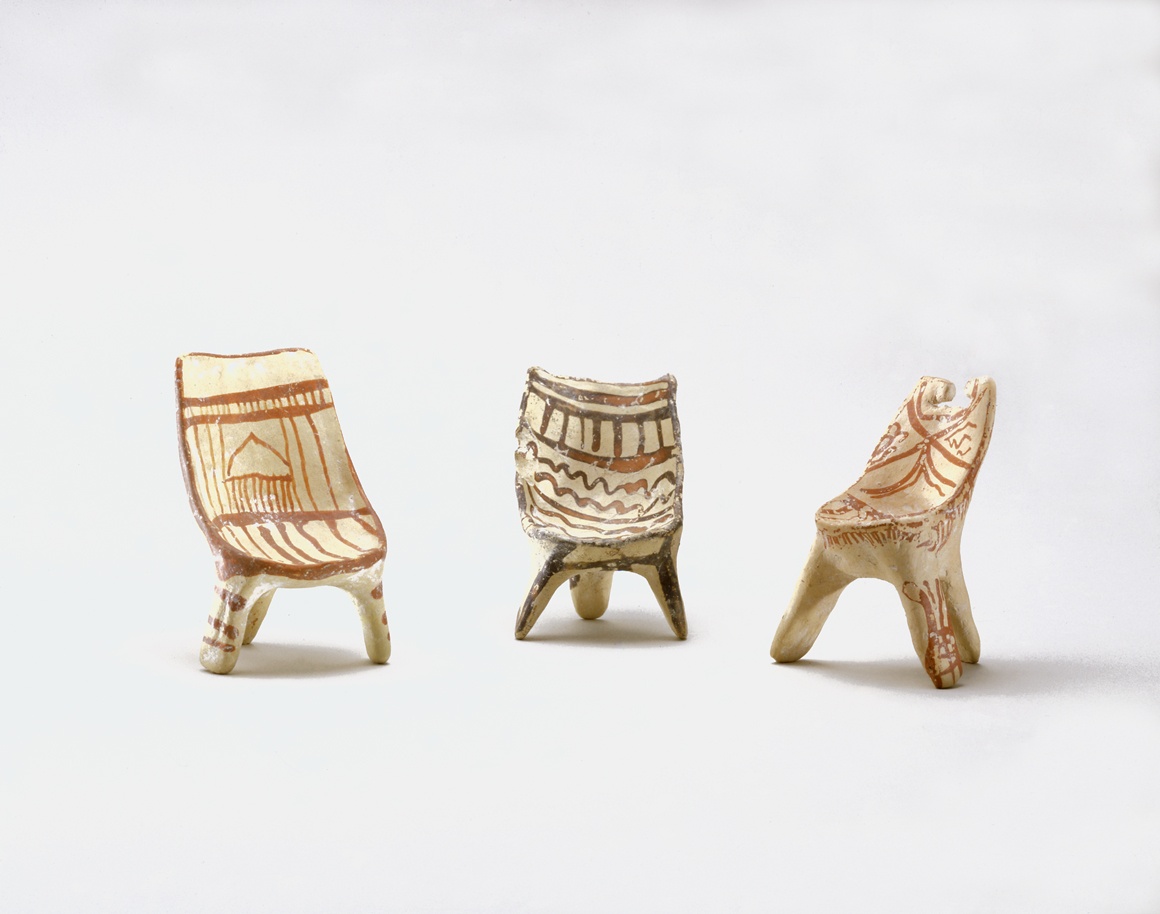
Terracotta
H: a. 8 cm; b. 7 cm; c. 8.2 cm
Provenance: no indication; Greece?
Late Mycenaean III
1400-1200/1150 B.C.
Modelled with the help of a spatula-like instrument. Parts smoothed with the help of a brush.
Condition: example a, chamois colour clay with rust-red painted linear and wavy linear decoration; the left front leg a modern restoration.
Example b, chamois colour clay, with painted linear-curvilinear decoration in dark brown to rust-red with slight chipping to the upright on right side. For colour of paint and technique, compare the rhyton in the shape of a pig in Athens [1].
Example c, chamois colour clay with a reddish hue, painted rust-red decoration impressionistic and imaginative. For brushwork, compare the throne from the Argive Heraeum [2] .
For the purpose, see remarks cat. no. 63.
The three-legged nature of our thrones [3] is a further indication that the Mycenaeans most likely gave religious meaning to the objects that accompanied the deceased in their tombs [4].
On example c, the top of the backrest looks like a stylization of bull's horns which continue the upper painted decoration. And what appears to be a small building with a pointed roof, painted on example a, may be a shrine, indicating that these are cult objects.
Exhibited and Published:
Art Antique, cat. no. 80A-C, ill.
Mentioned:
Amandry, P.: Sièges mycéniens tripodes et trépied pythique, in: Mélanges Mylonas (Athens, 1986), p. 167 ff., nos. 73-75, p. 174 (no. 73: Art Antique no. 80A, here no. 66b; no. 74: Art Antique no. 80B, here no. 66c; no. 75: Art Antique no. 80C, here no. 66a).
1 National Museum 6878: Das mykenische Hellas - Heimat der Helden Homers (Berlin, 1988), no. 214, pp. 224-225.
2 Athens, National Museum: Higgins, R.A.: Greek Terracottas (London, 1967), xviii, pl. 4C.
3 For a complete discussion and up-to-date bibliography see P. Amandry: Sièges mycéniens tripodes et trépied pythique.
4 Mylonas, G.E.: Seated and multiple Mycenaean figurines, in: Studies presented to Hetty Goldman (New York, 1956), p. 118 ff. Kranz, P.: Frühgriechische Sitzfiguren. Zum Problem der Typenbildung und des orientalischen Einflusses in der frühgriechischen Rundplastik, AM 87, 1972, p. 49.